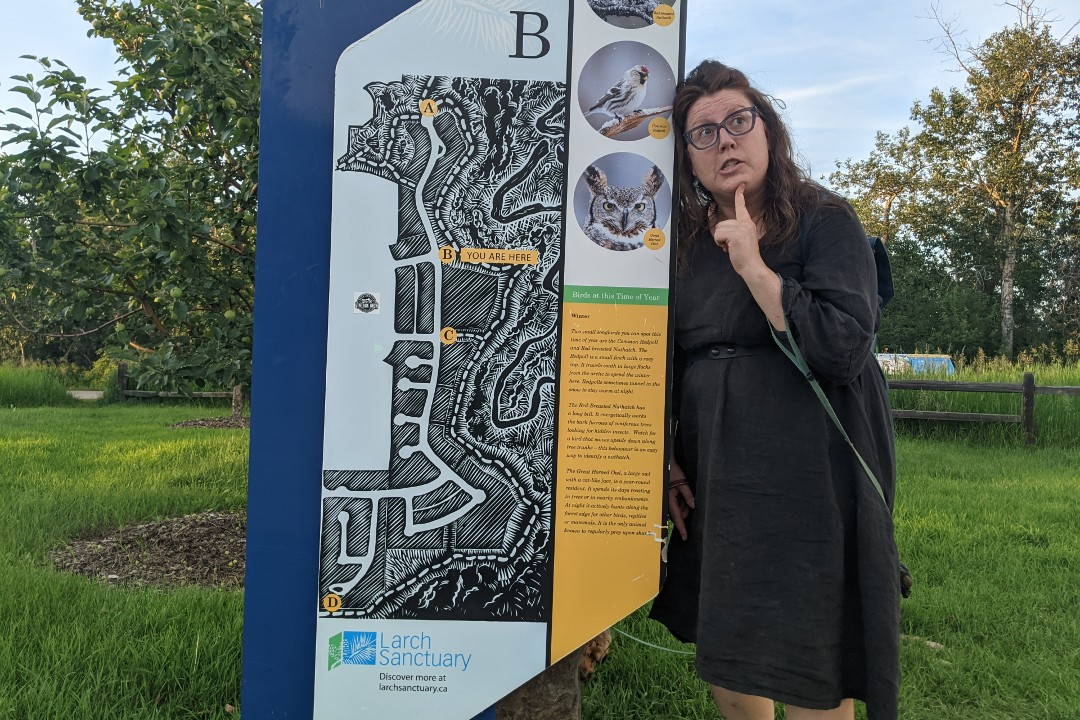Should Edmonton have a lichen preserve, or would the important but overlooked organism be better served by having more natural spaces everywhere in the city?
Episode 66 of Let's Find Out considered such questions on a visit to the Larch Sanctuary in the Magrath Heights neighbourhood. The trip was prompted by a question from Kyla Tichkowsky, who wanted to know why there are sanctuaries for birds but not the same kind of conservation efforts for species such as lichen.
"I understand from some of my very knowledgeable, science-passionate nerd friends that lichens are a better bioindicator than birds, but birds get a lot of the airtime," she told host Trevor Chow-Fraser.
It's certainly true that some organisms are easier to drum up support for than others, said Meghan Jacklin, a conservation coordinator with the Edmonton and Area Land Trust, which monitors the Larch Sanctuary, north of the University of Alberta's MacTaggart Sanctuary.
"This is really a relatively well-known problem, in that what gets the most attention for conservation is the charismatic species," Jacklin said. "So, unfortunately, lichens aren't charismatic enough to enough people."
The Larch Sanctuary consists of 59 acres of undeveloped forest. Diane Haughland, a lichenologist with the Alberta Biodiversity Monitoring Institute, pointed out several kinds of lichens on the tour of the sanctuary.
Small-scale disturbances in those spaces aren't a bad thing, as lichens depend on disruptions to spread and move around, Haughland said. However, too much disruption can prevent them from reestablishing in a habitat.
That's why "a preferred way to protect natural spaces is simply to have more of them," Jacklin said. "If you have the same number of people spread out over more area, you're going to reduce that impact. Then everybody gets access to those spaces and the spaces are protected for wildlife and for plants and for other things."

Having more natural spaces for people to use can help prevent long-term damage to the habitat, Edmonton resident Kyla Tichkowsky learned during a visit to the Larch Sanctuary. (Trevor Chow-Fraser/Let's Find Out)
If there are just a few natural spaces, people can slowly and inadvertently destroy them.
"People come here to enjoy the outdoors, but the activities that a lot of these people engage in are detrimental," said Tichkowsky. "This is a paradox, right? Like, these people go here because they love it. But the things that they do hurt it."
The natural spaces don't necessarily have to be as big as the Larch Sanctuary. After all, lichens don't take up much room.
"One of the things I'm taking away is that there is a real need for an increase in the different types of conservation spaces," Tichkowsky said. "And if there is a conservation space, there are going to be lichen there."
Learn more about lichen, the Larch Sanctuary, and conservation efforts in the Edmonton area in the July 5 episode of Let's Find Out, the podcast that answers Edmontonians' questions about local history.
Correction: This story has been updated to indicate EALT's role as a monitor of the Larch Sanctuary rather than as a manager and to correct the area's location relative to the MacTaggart Sanctuary.
